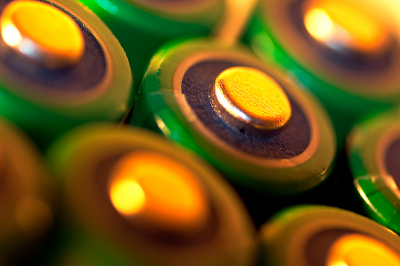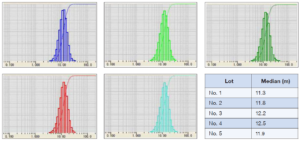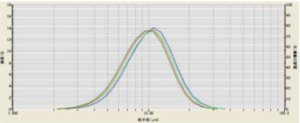
Battery technology is improving, keeping up with the demand for more portable devices and the desire for better power storage for longer periods between charging and changing batteries. Improved performance requires greater control of the materials used and their physical properties including the particle size distribution. In this study the LA-960 laser diffraction particle size analyzer was used to perform particle size distribution measurements on various materials used in the creation of lithium ion batteries.
Introduction
Batteries containing lithium include disposable (primary) lithium batteries, rechargeable (secondary) lithium ion batteries, and rechargeable lithium titanate batteries. Disposable lithium batteries have lithium metal or lithium compounds as the anode. Rechargeable lithium ion batteries use an intercalated lithium compound as the electrode material. A lithium titanate battery is a modified lithium-ion battery that uses lithium titanate nanocrystals on the surface on the anode. A partial list of cathode and anode materials used in lithium batteries is shown below:

The particle size distribution (PSD) of the materials used to make these batteries is tested in both R&D environments and in QC for product acceptance since a PSD specification typically exists for the material. Particle size influences both capacity and coulomb efficiency. Reducing the PSD will increase the specific surface area, changing important battery characteristics, but this also changes the size of the voids between electrode particles, reducing battery capacity.
Experimental
Lithium cobalt oxide
Lithium cobalt oxide (LiCoO2) has served as the archetypical cathode material for secondary Li-ion batteries since the 1980’s. Five different lots of lithium cobalt oxide powder to be used as cathode material were analyzed on the LA-960 Particle Size Analyzer. The powder was dispersed in water containing 0.2% sodium hexametaphosphate. This was standard pass/fail testing to determine if the material met the incoming material particle size specification. The results from the different lots are shown in Figure 1 and Table 1.

Lithium manganese oxide
During the method development for dispersing lithium manganese oxide (LiMn2O4) the effect of applying ultrasound was investigated. The powder was dispersed in DI water containing 0.2% sodium hexametaphosphate. The sample was analyzed without ultrasound, and then with 1, 3, and 5 minutes of ultrasound. The results for these measurements are shown in Figure and Table 2 to the right. The optimal time of ultrasound was determined to be 3 minutes.


Learn More?
Please click on ‘Request Application Note’ and we will send you the full application note ‘Particle Analysis of Litium Ion Batteries’.
